
Roots
Our strands, vibrant and resilient, carry echoes of ancient whispers. They tell stories not just of genetics and environment, but of practices passed down through generations, often silently shaping our approach to hair care today. The seemingly simple act of covering one’s head, a custom observed across diverse cultures and millennia, holds a profound wisdom for the modern textured hair journey.
It invites us to consider the elemental truths of protection, preservation, and cultural continuity that reside within these historical gestures. This initial exploration gently unearths the foundational insights, guiding us to perceive how these ancestral habits, far from being relics of the past, remain deeply relevant to the vitality and beauty of textured hair in our contemporary world.
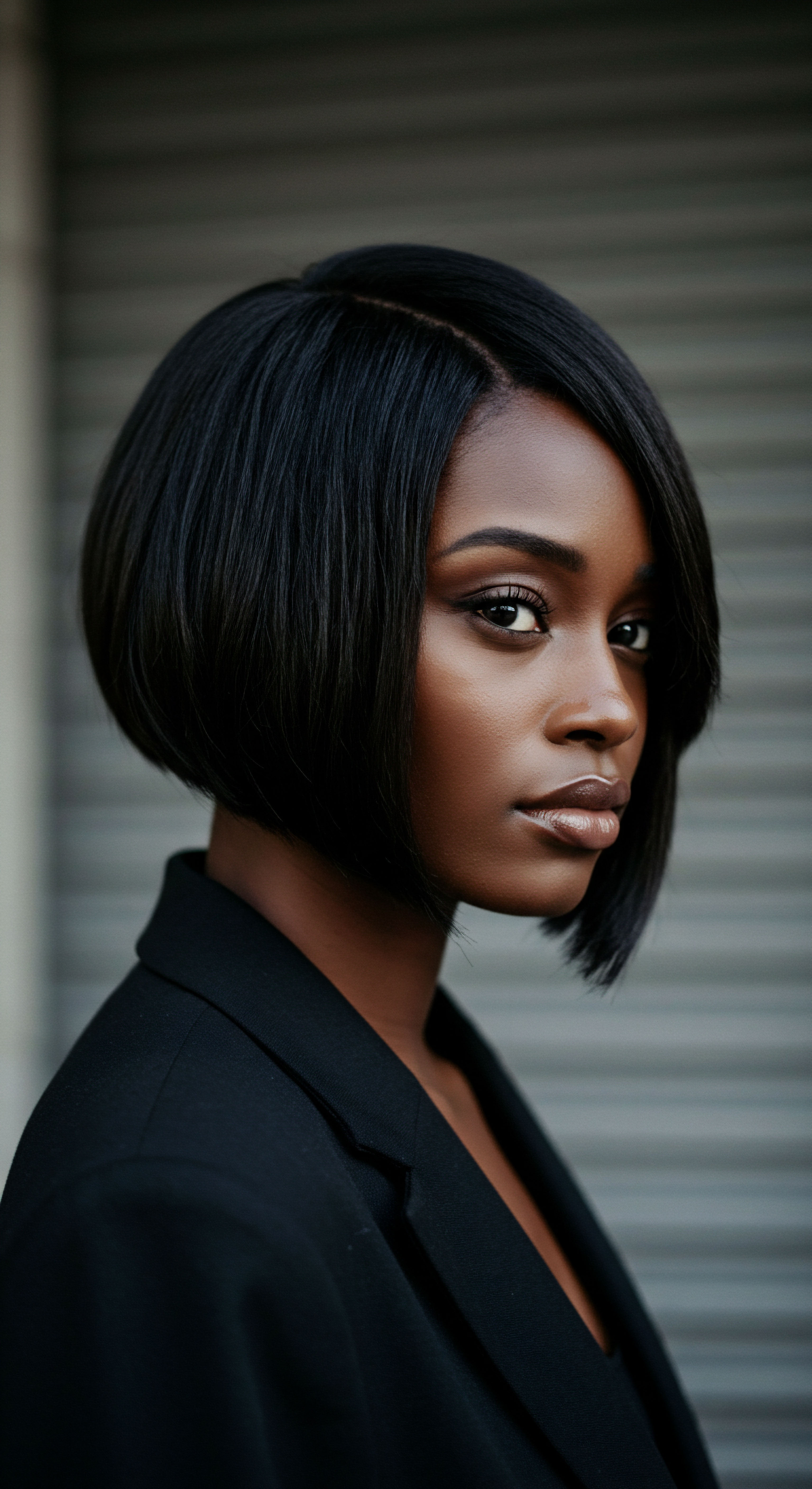
The Earliest Guardians of Hair
Long before the advent of elaborate hair products or sophisticated styling tools, humanity instinctively understood the vulnerability of hair to the elements. Early societies, living intimately with nature’s whims, developed ingenious methods to shield their crowning glory. Head coverings, in their most primal forms, served as the very first line of defense against the relentless sun, biting winds, and abrasive dust. These were not merely fashion statements or religious declarations; they were practical tools for survival and preservation.
Consider the ancient nomadic tribes traversing vast deserts. Their headwraps, often crafted from readily available natural fibers, acted as a physical barrier, preventing moisture evaporation from the scalp and hair. This basic function, shielding from environmental aggressors, holds direct parallels to our contemporary understanding of maintaining moisture balance in textured hair, which is particularly susceptible to dryness. The protective quality of these early coverings laid the groundwork for future innovations in hair preservation.
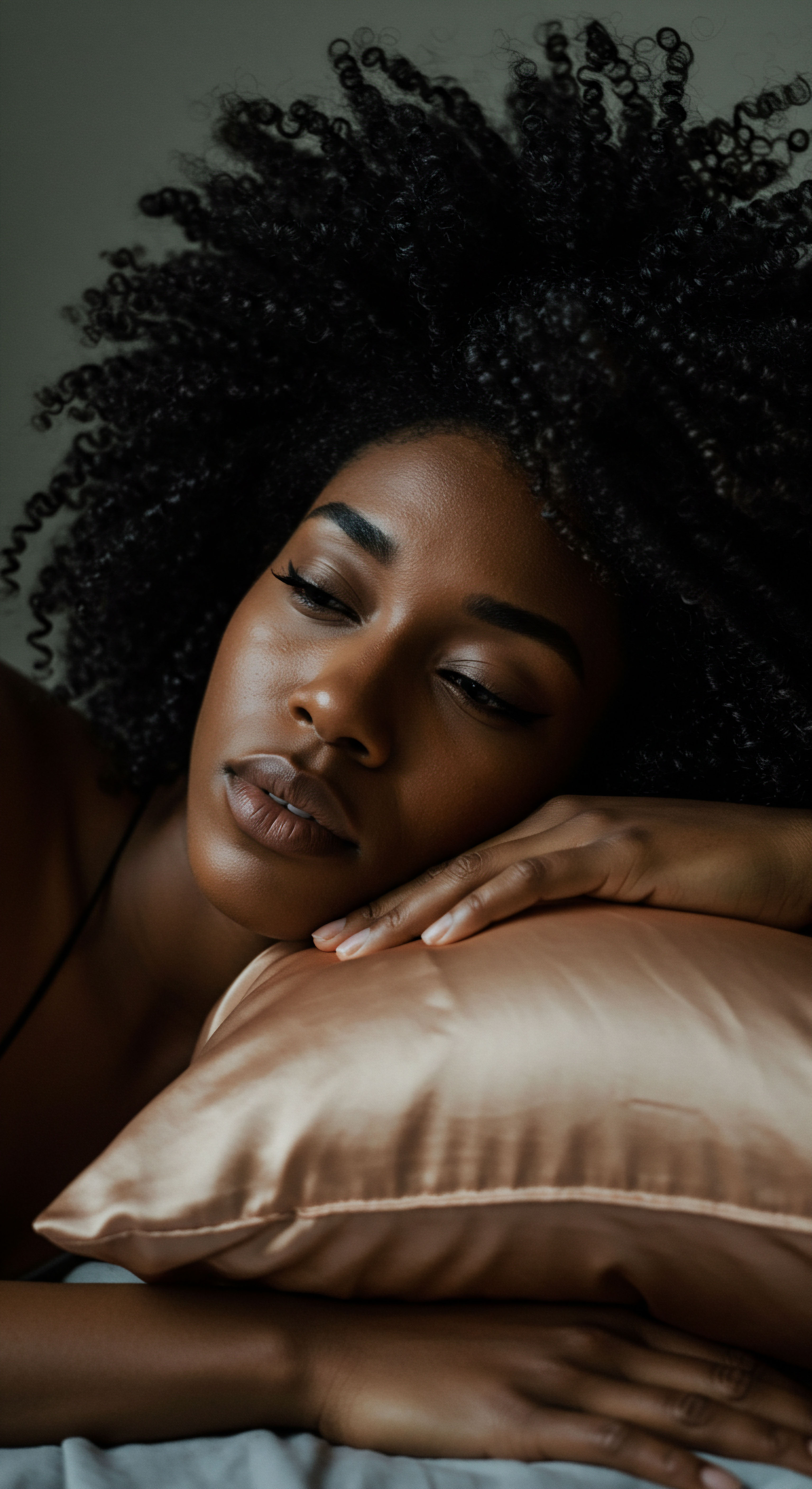
Hair Anatomy and Environmental Resilience
The very structure of textured hair, with its unique coil patterns and raised cuticles, presents both a challenge and a marvel. While these characteristics lend incredible volume and styling versatility, they also mean textured strands can be more prone to moisture loss and physical damage from external forces. Historically, head coverings provided a solution to this inherent vulnerability, creating a microclimate around the hair that minimized exposure.
Early protective measures, like wrapping hair in natural fibers, likely reduced friction and tangling, common culprits of breakage in textured hair. The simple act of containing the hair prevented it from snagging on rough surfaces or becoming overly exposed to abrasive winds. This rudimentary understanding of environmental protection directly informs our modern emphasis on low-manipulation styling and the use of gentle materials for sleep and daily wear.

What Ancient Textiles Taught Us About Hair Protection?
The materials chosen for historical head coverings were not arbitrary; they reflected an intuitive understanding of their properties. While evidence suggests a variety of plant and animal fibers were used, the consistent appearance of smooth, tightly spun materials in some cultures hints at an early recognition of reduced friction. For instance, archaeological finds from ancient Egypt reveal the use of finely woven linens and later, imported silks, which would have offered a gentler surface for hair compared to coarser fabrics. This preference for smoother textures speaks to an unwritten knowledge of minimizing hair abrasion.
Ancient head coverings provided a foundational lesson in hair protection, shielding delicate strands from environmental harshness and minimizing physical stress.
The concept of a “microclimate” around the hair, fostered by a covering, is a fascinating link between ancient practices and modern science. By limiting exposure to dry air and sun, these coverings helped to maintain a more consistent humidity level around the hair shaft, thereby preserving its natural moisture. This historical precedent underscores the scientific basis for modern protective styling, where the goal is often to create a stable environment for the hair to thrive.
- Environmental Shielding ❉ Head coverings served as a primary defense against sun, wind, and dust, preventing moisture loss and physical damage.
- Friction Reduction ❉ Smoother materials, whether intentional or not, lessened tangling and breakage, particularly beneficial for delicate hair structures.
- Moisture Regulation ❉ By enclosing the hair, coverings helped maintain a consistent humidity around the strands, preventing dehydration.

Ritual
Stepping from the foundational wisdom of hair protection, we now approach the realm of ritual, where historical head coverings transcend mere practicality to become imbued with deeper meaning and intention. For those of us navigating the intricate dance of textured hair care today, there is a profound resonance in observing how past generations wove purpose and rhythm into their hair practices. This section invites us to consider the daily and periodic rhythms that shaped hair care through head coverings, offering gentle guidance on how these enduring patterns can inform our own contemporary routines. It is a space where techniques and methods are explored not as rigid rules, but as adaptable insights, encouraging a more thoughtful and connected approach to our strands.

The Daily Discipline of Hair Preservation
Across various cultures, head coverings were not merely donned for public appearance; they were integral to daily life, often worn for extended periods, including during sleep. This continuous covering acted as a sustained protective measure, safeguarding hair from the wear and tear of everyday activities and the often-overlooked stresses of nighttime friction. This consistent care routine, spanning hours of the day and night, offers a compelling parallel to modern protective styling and nighttime regimens.
Consider the practice in many West African cultures where women would meticulously wrap their hair in vibrant fabrics before bed. This was not simply about preserving a style for the next day; it was about preventing tangles, reducing breakage, and maintaining the hair’s moisture overnight. This intentionality, the understanding that hair needed protection even during repose, directly mirrors our modern reliance on silk bonnets and pillowcases.

How Do Historical Nighttime Practices Inform Modern Hair Care?
The historical practice of covering hair at night stands as a powerful testament to an intuitive understanding of hair preservation. Before scientific studies elucidated the benefits of silk and satin, generations knew that sleeping with unprotected hair led to dryness, frizz, and breakage. The rough textures of traditional sleeping surfaces, whether straw mats or coarse cotton, would draw moisture from the hair and cause friction, leading to damage.
Historical nighttime head coverings offer a powerful precedent for modern protective sleep routines, safeguarding hair from friction and moisture loss.
This historical wisdom is strikingly validated by contemporary research. A study examining the impact of pillowcase materials on hair demonstrated that while cotton pillowcases can absorb significant moisture from hair, silk and satin options significantly reduce friction and help retain hair’s natural hydration. This modern data point underscores the efficacy of an ancient, seemingly simple practice. The consistency of historical nighttime covering provided a continuous shield, allowing hair to rest and recuperate without environmental interference.
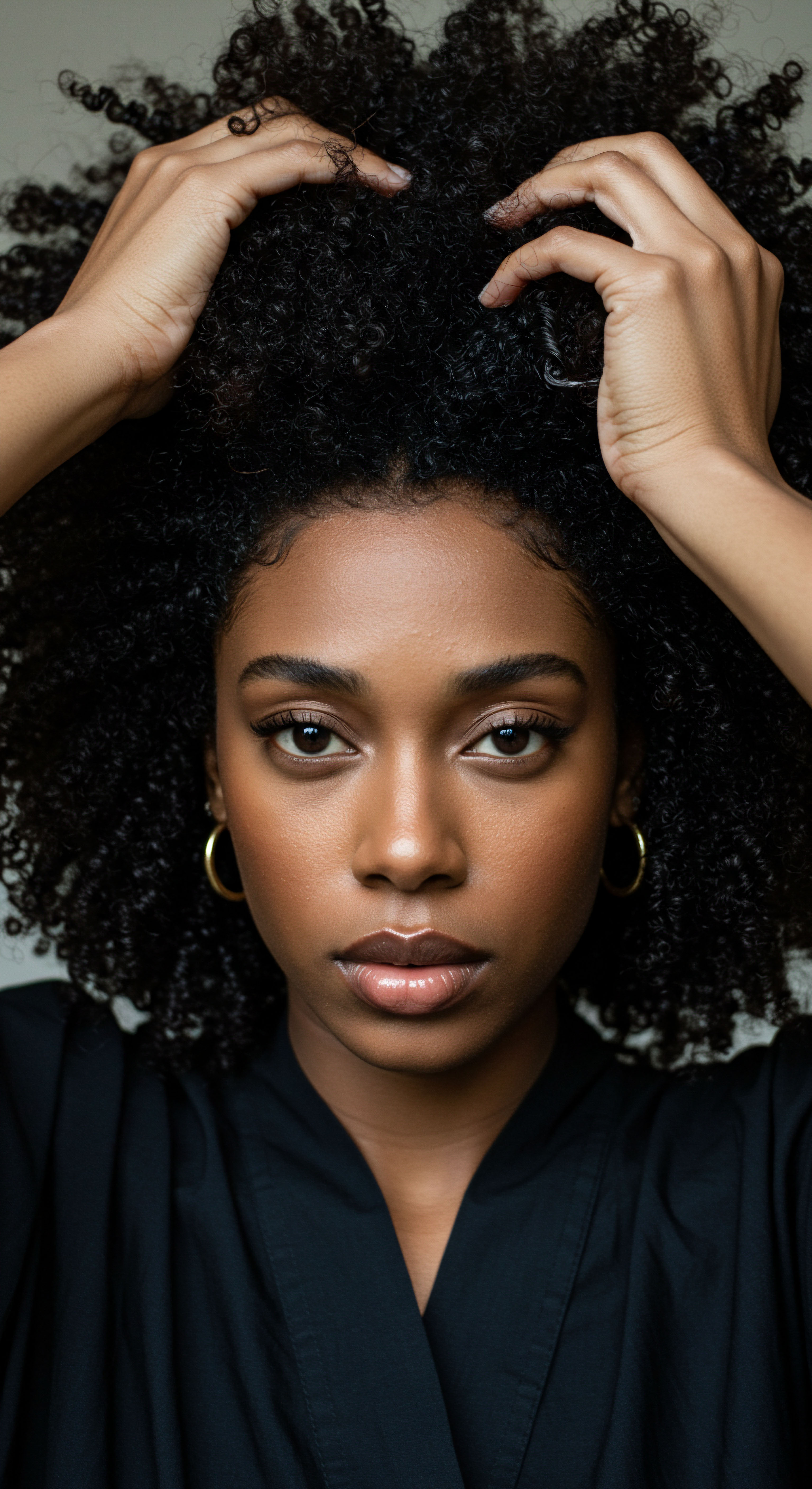
Beyond Protection The Role of Adornment and Identity
While protection was a primary function, head coverings also played a significant role in cultural expression, status, and identity. The intricate wrapping styles, the choice of fabric, and the embellishments often conveyed social standing, marital status, or tribal affiliation. This dual purpose – practical and symbolic – meant that the act of covering hair was often performed with great care and reverence, inadvertently contributing to the hair’s overall well-being.
The ritualistic aspect of preparing and adorning the hair before covering it likely involved gentle handling and the application of natural oils or emollients. This meticulous preparation, coupled with the protective cover, created an environment conducive to hair health. The very act of engaging with one’s hair in a mindful, almost ceremonial way, can reduce stress and foster a deeper connection to one’s self and heritage, a holistic benefit often overlooked in purely scientific discussions of hair care.
| Historical Practice Daily Headwrapping (e.g. West Africa) |
| Implied Hair Benefit Protection from elements, reduced tangling |
| Modern Parallel Daily protective styles (braids, twists), low manipulation styling |
| Historical Practice Nighttime Hair Covering (e.g. various cultures) |
| Implied Hair Benefit Moisture retention, friction reduction |
| Modern Parallel Silk/satin bonnets, pillowcases, nighttime hair wrapping |
| Historical Practice Use of specific fabrics (e.g. fine linen, silk) |
| Implied Hair Benefit Minimized hair abrasion, preserved moisture |
| Modern Parallel Preference for silk/satin accessories, gentle towels |
| Historical Practice Ritualistic Hair Preparation before Covering |
| Implied Hair Benefit Gentle handling, application of natural emollients |
| Modern Parallel Mindful detangling, pre-poo treatments, sealing moisture |

Relay
Having explored the elemental roots and ritualistic rhythms of historical head coverings, we now step into the sophisticated currents of their contemporary relay. This section invites a deeper, reflective inquiry, unearthing the less apparent complexities that these ancient practices illuminate for modern textured hair care. Here, science, culture, and intricate details converge, providing profound insight into how the historical act of covering hair transcends simple protection to become a multi-dimensional influence on our present-day approaches. We will bypass surface-level discussions, providing a profound understanding backed by research and data, analyzing the interplay of biological, psychological, social, and cultural factors.

The Biophysical Impact of Enclosure
The biophysical effects of head coverings on hair are far more sophisticated than simple physical shielding. By creating a confined environment, head coverings alter the microclimate immediately surrounding the hair shaft, impacting humidity, temperature, and exposure to airborne particulates. This controlled environment is particularly beneficial for textured hair, which, due to its structural characteristics, tends to lose moisture more readily than straighter hair types.
Research in trichology consistently highlights the importance of maintaining optimal moisture levels within the hair cortex. When hair is exposed to low humidity or high winds, water molecules are rapidly lost, leading to dryness, brittleness, and increased susceptibility to breakage. Historical head coverings, especially those made from relatively non-absorbent materials, effectively mitigated this evaporative loss. This phenomenon is akin to a humidor for hair, preserving its internal moisture content.
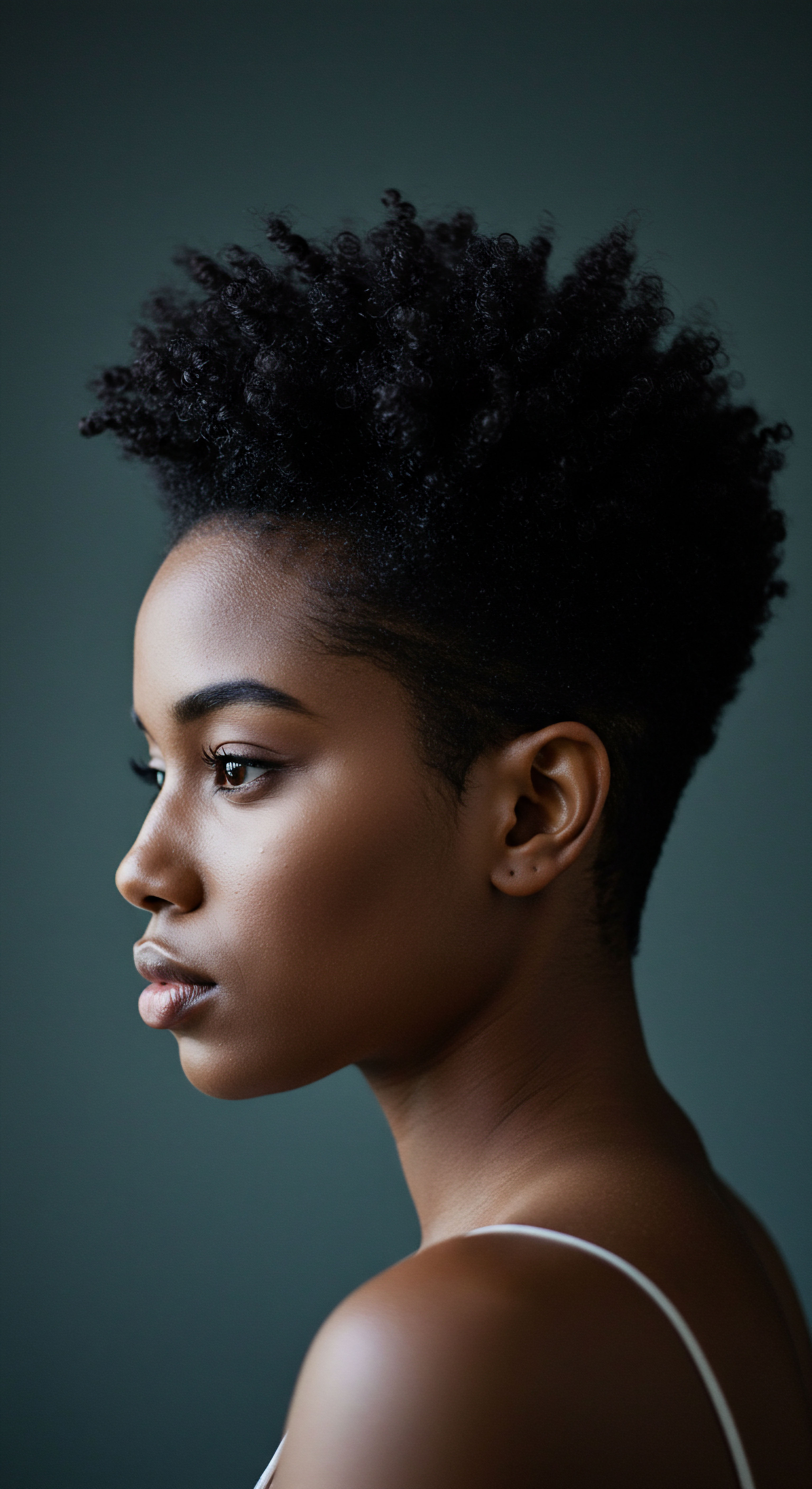
Can Consistent Covering Influence Hair Elasticity and Strength?
The consistent, gentle pressure and reduced exposure afforded by head coverings could indeed contribute to improved hair elasticity and strength over time. Hair elasticity, its ability to stretch and return to its original state, is directly linked to its hydration levels and the integrity of its protein structure. When hair is consistently protected from harsh environmental stressors like UV radiation and excessive friction, its protein bonds are less likely to degrade, and its moisture content remains higher.
Consider a compelling study published in the International Journal of Cosmetic Science which examined the impact of different sleep surfaces on hair friction and moisture retention. While not directly about head coverings, the findings illustrate the principle. The study revealed that hair experienced significantly less friction and maintained higher moisture levels when exposed to silk surfaces compared to cotton.
This research, while modern, provides a scientific basis for the historical wisdom of using smooth fabrics for hair protection, whether as a wrap or a bonnet. The reduced friction minimizes mechanical stress on the hair cuticle, preventing lifted scales and subsequent protein loss, thereby preserving strength.

Sociocultural Identity and Hair Care Practices
Beyond the biophysical, historical head coverings profoundly shaped the social and psychological landscape of hair care. In many cultures, hair, when covered, became a private, intimate aspect of self, reserved for personal rituals or close familial settings. This privatization of hair fostered a distinct relationship with one’s strands, often leading to more deliberate and gentle care practices during moments of uncovering.
The act of covering hair could also signify reverence, a connection to spiritual beliefs, or a statement of modesty. When hair holds such profound cultural weight, the methods used to prepare it for covering become imbued with significance. This could translate to the careful application of traditional oils, slow and deliberate detangling, or the braiding of hair into protective styles before being wrapped. These practices, born from cultural directives, inadvertently served as comprehensive hair care regimens.
- Reduced Environmental Stress ❉ Head coverings shield hair from UV radiation, pollution, and harsh weather, which degrade protein and strip moisture.
- Mechanical Protection ❉ They minimize friction and snagging from clothing, furniture, and environmental contact, preventing cuticle damage and breakage.
- Moisture Equilibrium ❉ By creating a stable microclimate, coverings help maintain the hair’s internal hydration, crucial for elasticity and strength.
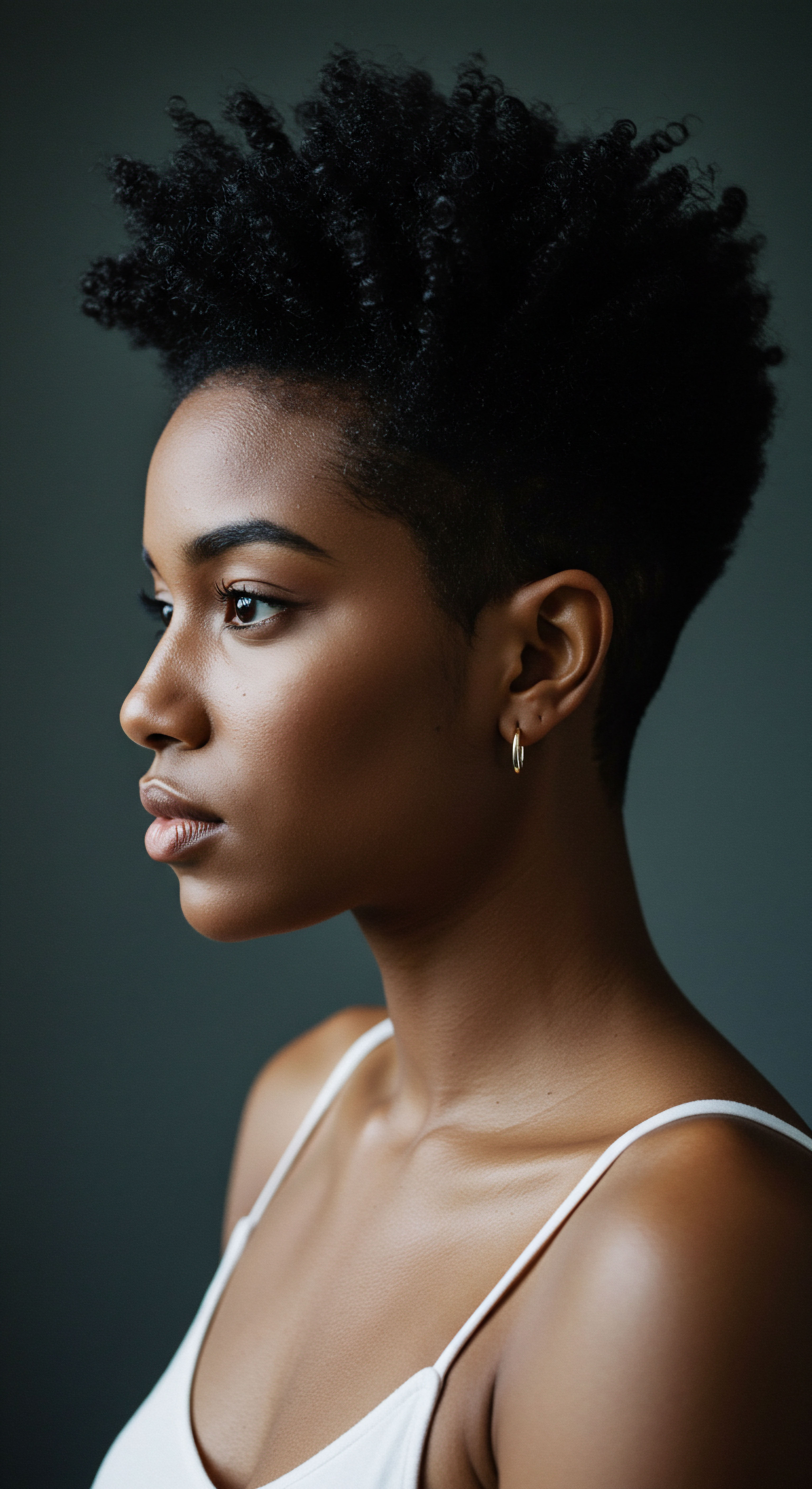
The Intergenerational Transfer of Hair Knowledge
Historical head covering practices were often taught from elder to younger, forming a conduit for intergenerational knowledge transfer regarding hair care. The specific wrapping techniques, the choice of materials, and the timing of covering and uncovering were all lessons in practical hair management. This oral and demonstrated tradition ensured that sophisticated methods of preserving textured hair were passed down, even without formal scientific understanding.
For instance, the precise methods of wrapping kinky or coily hair under a headwrap often involved techniques that minimized tension on the scalp and avoided pulling at delicate edges. These were not just styling methods; they were acts of preventative care. The understanding that hair should be clean, moisturized, and detangled before being covered was often an unspoken rule, a part of the ritual itself. This deep-seated knowledge, relayed through generations, continues to resonate in modern textured hair communities that prioritize gentle handling and protective styling.
| Hair Health Parameter Moisture Content |
| Historical Covering Influence Creates humid microclimate, reduces evaporation. |
| Modern Hair Care Relevance Use of humectants, sealing oils, moisture-retentive fabrics. |
| Hair Health Parameter Cuticle Integrity |
| Historical Covering Influence Minimizes friction, protects from environmental damage. |
| Modern Hair Care Relevance Low manipulation styles, gentle detangling, pH-balanced products. |
| Hair Health Parameter Breakage Reduction |
| Historical Covering Influence Physical barrier against snags, pulls, and harsh elements. |
| Modern Hair Care Relevance Protective styles, silk/satin accessories, gentle styling tools. |
| Hair Health Parameter Scalp Health |
| Historical Covering Influence Shields from direct sun, can maintain consistent temperature. |
| Modern Hair Care Relevance Scalp treatments, gentle cleansing, avoiding harsh chemicals. |
| Hair Health Parameter Elasticity |
| Historical Covering Influence Preserves hydration and protein structure by reducing external stress. |
| Modern Hair Care Relevance Deep conditioning, protein treatments, avoiding excessive heat. |
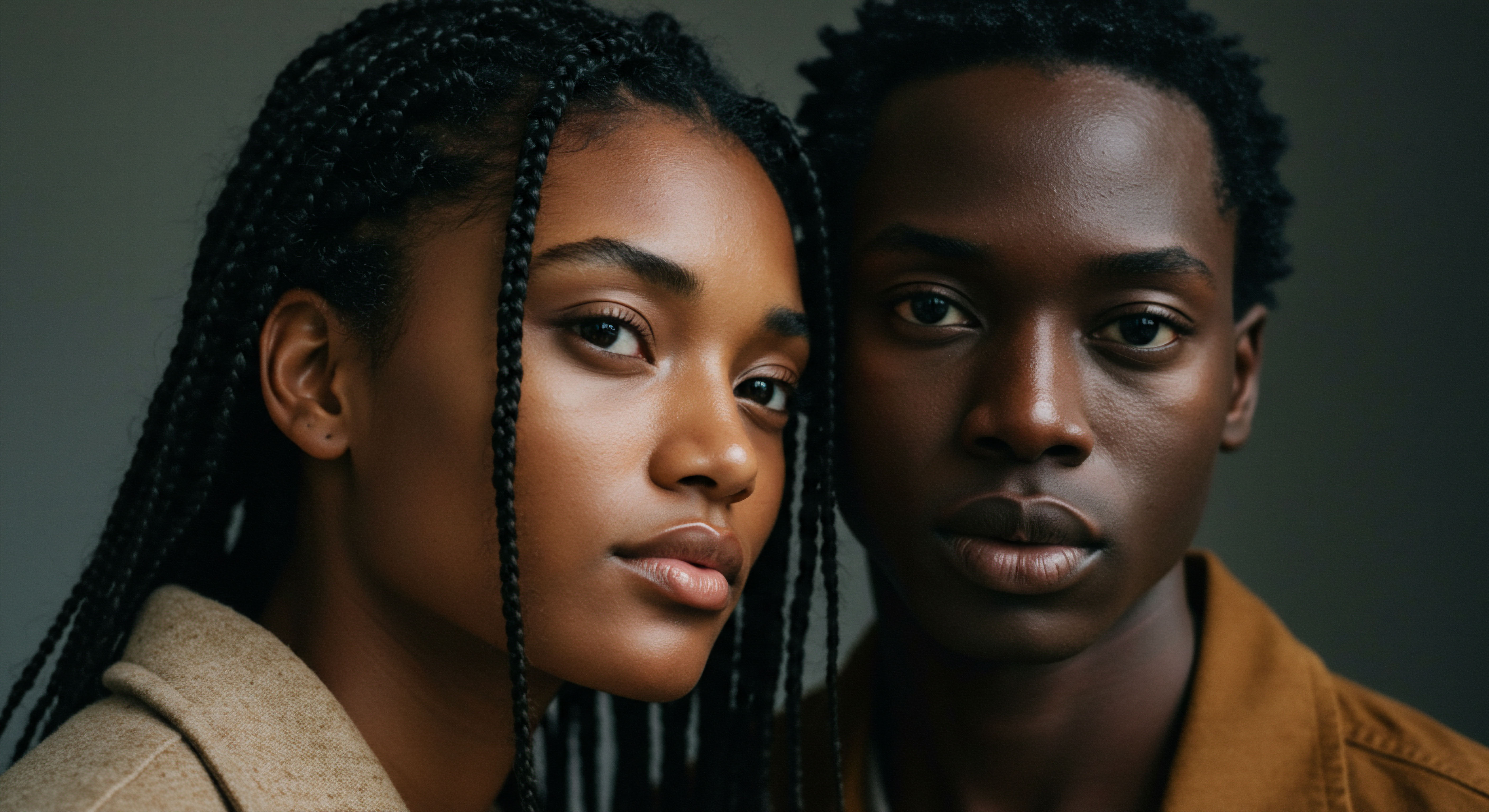
Reflection
The enduring wisdom of historical head covering practices, far from being confined to dusty archives, continues to whisper through the very fibers of modern textured hair care. From the intuitive protection against environmental aggressors to the deliberate rituals of nightly preservation, these ancestral habits offer a profound mirror to our contemporary routines. They remind us that the quest for healthy, vibrant hair is a timeless one, rooted in a deep understanding of our strands’ unique needs and a respectful engagement with their natural inclinations. As we navigate the vast landscape of modern products and techniques, let us remember the quiet power of these ancient gestures, allowing them to guide us toward a more mindful, holistic, and ultimately, more resonant relationship with our own beautiful hair.

References
- Kim, S. I. & Lee, J. D. (2014). The effect of various pillowcase materials on hair friction and moisture content. International Journal of Cosmetic Science, 36(6), 577-582.
- Blay, E. J. (2007). Amistad ❉ The African American Journey Through Slavery. Waveland Press.
- Byrd, A. D. & Tharps, L. D. (2014). Hair Story ❉ Untangling the Roots of Black Hair in America. St. Martin’s Press.
- Rooks, N. M. (1996). Hair Raising ❉ Beauty, Culture, and African American Women. Rutgers University Press.
- Sherrow, V. (2006). Encyclopedia of Hair ❉ A Cultural History. Greenwood Press.
- Mercer, K. (1994). Welcome to the Jungle ❉ New Positions in Cultural Studies. Routledge.
- Patton, S. (2006). African-American Art. Oxford University Press.